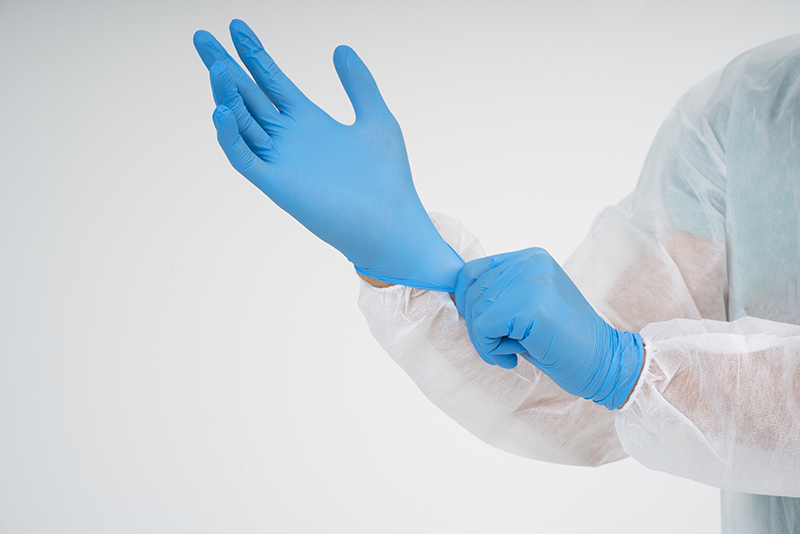
- By: admin_vietglove
- 29/10/2024
The Essential Role of Nitrile Gloves in Healthcare
In the healthcare field, protecting both patients and healthcare providers is paramount, and nitrile gloves have become an indispensable part of this mission. Made from a synthetic rubber compound, nitrile gloves offer a high level of protection against contaminants, chemicals, and bloodborne pathogens, making them an ideal choice for hospitals, clinics, and laboratories. For healthcare professionals who require reliable, durable gloves that are also comfortable for extended wear, nitrile gloves deliver essential benefits across multiple facets of patient care.
One of the primary reasons healthcare facilities rely on nitrile gloves is their impressive chemical resistance. In a hospital or clinical setting, professionals routinely encounter harsh disinfectants, cleaning agents, and bodily fluids—all of which can compromise the integrity of traditional latex or vinyl gloves. Nitrile gloves, however, resist degradation when exposed to such chemicals, offering a higher level of protection. This characteristic makes them especially suited for procedures involving chemotherapy drugs, hazardous biological samples, and other potentially infectious materials.
Beyond their chemical resistance, nitrile gloves are widely valued for their strength and puncture resistance. Unlike latex, which can tear easily when exposed to sharp instruments, nitrile provides a barrier up to three times more resistant to punctures. This durability ensures that healthcare workers can focus on the task at hand without the constant concern of glove tears, reducing risks of accidental exposure. Whether a nurse is administering an injection, a surgeon is performing a delicate procedure, or a lab technician is handling samples, nitrile gloves help provide a secure layer of protection.
Importantly, nitrile gloves are also hypoallergenic. In a setting where rapid and close patient care is critical, latex allergies can be a significant concern for both patients and staff. Nitrile gloves, being free of latex proteins, eliminate the risk of allergic reactions associated with latex gloves. This quality is especially vital in environments where immediate response is essential and where avoiding potential allergens is part of maintaining a safe and inclusive healthcare space. For example, an allergen-free environment is crucial in pediatric or intensive care units, where vulnerable patients require the highest level of care.
Comfort is another key advantage of nitrile gloves for healthcare professionals who wear gloves for prolonged periods. Modern nitrile gloves are designed to fit snugly, providing a natural feel and minimizing hand fatigue. Many healthcare workers report that nitrile gloves conform well to their hands, allowing for dexterity and precision, which is crucial when administering injections, drawing blood, or performing other precise tasks. Additionally, powder-free nitrile options are widely available, reducing the risk of skin irritation and ensuring patient safety, particularly in sensitive or sterile environments.
Sustainability is also emerging as a focus in the healthcare industry, where high volumes of disposable gloves are used daily. With a growing emphasis on environmental responsibility, manufacturers are researching ways to produce biodegradable nitrile gloves that retain the protective qualities healthcare providers need. This balance between protection and sustainability aims to reduce the environmental footprint of medical-grade disposables, addressing a significant concern in today’s healthcare landscape.
In summary, nitrile gloves have become a trusted choice for healthcare professionals, combining strength, safety, and comfort. Their chemical and puncture resistance, hypoallergenic nature, and ability to offer a secure fit make them ideal for the rigorous demands of healthcare environments. As the industry moves toward more sustainable practices, nitrile gloves continue to be a critical tool in patient and provider safety, adapting to meet the evolving needs of modern healthcare.
Share










